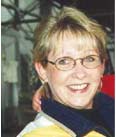Login | Subscribe | Stay Engaged | About | Partnerships | Contact
Volunteer Program/Resources Manager, Role of
Thinking the Unthinkable: Are We Using the Wrong Model for Volunteer Work?
Right now in volunteer management we are facing a rising tide: the increasing preference among potential volunteers for short-term, episodic volunteering. By all guesses, in practically all countries, the number of volunteers preferring a shorter term commitment is rising and there isn’t much on the futures forecast to give one hope for any reversal in this trend. We need to step back and take a concerted look at what we are asking volunteers to do and how we are asking them to do it.
Group Interviewing Techniques: Hitting the Bull's-Eye Every Time
Interviewing is a lot like archery. The athletes who participate in that sport have their mind on one thing: hitting the bull’s-eye. Their strategy is to develop the skills to hit the bull’s-eye portion of the target every time. Your target when you interview is the kind of volunteer you want to place. And you need to develop the skills to hit that target as often as possible. Group interviewing, which is showcased in this article, will enable you to hit the bull’s-eye every time.
Traditionally, most volunteer interviews take place in a one-on-one situation between the candidate and a member of the volunteer program staff...The group interviewing process recommended here involves interviewing five volunteers simultaneously with two trained volunteer placement counselors conducting the interview. The philosophy of group interviewing, designing the group interview process, selecting and training volunteer placement counselors, the logistics of this system, and evaluation of interview efficacy are each be explored in this article.
Designing a Strategy for Persuasion
Good, skilled people in the field of volunteer management are often unsuccessful because they function reactively in programs where there is little or no true commitment, understanding or support for developing and sustaining a healthy, cutting-edge volunteer program. Individuals leading volunteer programs must not only be excellent technicians but also be able to proactively influence individuals and systems to work effectively with volunteers. Betty Stallings takes you step-by-step through the process of developing your own persuasion strategy.
Is Volunteer Management Superior to Employee Management?
Every once in a while we run into someone from Corporate America who, upon learning that we work primarily with nonprofits, proceeds to talk about how charities should be run more like businesses. We also occasionally find the Nonprofit Executive who is certain that social problems would be cured if her or his agency had more employees and higher salaries.
Since we work with nonprofits, government agencies and corporations we’ve had a lot of opportunity to notice how each of these sectors manages themselves, and we’d like to make a few observations of our own.
International VPM Job Exchanges, Part 2
In the last edition of e-Volunteerism, we took a look at an innovative work exchange between Volunteer Program Managers from Australia and Canada.
This issue we continue our exploration of international work exchanges, taking a closer look at a program offering an international perspective to colleagues from the United Kingdom and the USA.
Andy Fryar (Convening Editor)
During 2000, a partnership between Community Service Volunteers (CSV) in the United Kingdom and the Minnesota Association of Volunteer Directors (MAVD) in the United States, achieved a long planned dream of participating in a work exchange of Volunteer Program Managers from both countries. e-Volunteerism asked three participants about the first exchange between the two organisations: Arnie Wickens, the Director of CSV Consulting in the United Kingdom; Sandy Bergeron, Past President of MAVD; and Melissa Eystad, e-Volunteerism Editor of the All-Volunteer Groups feature area and the initiator of this exchange project.
Earning Power and Respect for Volunteer Services: A Dozen Action Steps
The Internal Battle
by Steve McCurley
Niccolo Machiavelli is famous for writing a book entitled The Prince, which is about gaining and exercising Power. "Power" is something that you don't hear discussed much among volunteer managers, since most of them don't have it. In fact, the closest the typical volunteer manager gets to studying "Power" is if they encounter the works of David McClelland and learn about "affiliators," "achievers," and the "power-oriented," and then make use of that knowledge in interviewing and matching volunteers to positions....
The External Battle
by Susan J. Ellis
There are two reasons to take the search for power outside your agency's walls:
-
It allows you to join forces with colleagues and collective action always carries more clout.
-
If you gain the respect of others, your own organization is forced to view you differently, too.
Again, as a profession, we tend to resist making waves. The trouble is that often we won't even get into the water! There are as many consequences to doing nothing as to doing something. The question is which consequences are more painful? .....
Volunteer Management: An Overlooked Strategy in Improving the Elections Process
The fiasco of the United States Presidential Election 2000 in Florida made a mockery of a democracy's fundamental activity: voting. Mountains of paperwork analyzing what went wrong with election technology or election laws have accumulated in election offices, legislatures and courtrooms around the nation. "Hanging chads" and "recounts" became household expressions - and justly so. Some elections districts had error rates as high as 5 percent, far greater than President George W. Bush's margin of victory. Technological and legal issues clearly needed attention to revive Americans' flagging confidence in the elections system after the controversy, as post-election polls showed.
What most of the analysis by government task forces, academics and pundits largely has overlooked, however, has been the role poor poll worker management played in causing problems on Election Day. The evidence, which ranged from the comic to the shocking, was everywhere. In one case, a poll worker accidentally took a bag of ballots home after mistaking it for his laundry. Poll workers in other Florida voting districts improperly turned away voters from the polls, mishandled machinery that led to vote-calculation errors, or weren't able to instruct voters on how to properly operate voting machines. Incidents like these indicate that, in addition to modernizing election equipment and updating old laws, governments should take a cue from the business community in recognizing "people problems" in their organizations. "Senior executives are beginning to devote the necessary attention to understand the links between human activities and desired business outcomes," Jessica Korn of the Gallup Organization said:
In terms of elections, the "business outcomes" are reducing the number of errors made during elections and making voting as painless as possible for voters. And while the business world can help point out the malady, the volunteer community can shed light on actionable solutions. The nature of poll workers' jobs makes volunteer-management principles in four areas - attitude and motivation, recruitment, training, and evaluation - especially apropos for improving the election process.
After dispensing with some helpful definitions, this paper will describe common election routines and how to apply volunteer-management best practices. The goal isn't to lambaste elections administrators - many of whom have made admirable innovations in election management or face significant barriers to reform - but to suggest ways they might better meet the needs and expectations of the public.
International VPM Job Exchanges, Part 1
e-Volunteerism is always on the lookout for new innovative programs, practices and initiatives to share with our readers. When we learnt recently of two international work exchanges among volunteer management practitioners, we were quick to speak to those involved.
In this issue we will take a look at a work exchange that took pace between two volunteer program managers from Canada and Australia. In our next issue will feature a new exchange program established between the USA and the United Kingdom.
How did the work exchange come about?
 Rosie Williams (Australia)
Rosie Williams (Australia)
I initiated the work exchange for a number of reasons. I wanted to have an adventure, to think and live outside the square I live in, to challenge myself and to gain new knowledge and skills. I considered a range of options to achieve this end and finally decided that a work exchange would give me a range of opportunities while minimising my risks considerably.
 Judi Reed (Canada)
Judi Reed (Canada)
I responded to Rosie Williams' invitation after seeing her advertisement for an exchange partner on the Energize web site in September 1999. I was seeking education, but of an informal and experiential nature. The opportunity to work in another English speaking country and use my volunteer management skills seemed like a chance to learn, share, and grow.
Beyond Competencies
In the mid-1970s, the Association for Volunteer Administration embarked on a revision of its professional credentialing program. AVA selected a performance-based system, based on a core group of competencies deemed essential for the effective administration of volunteer programs. At the recent international conference in Toronto, Canada, Sarah Jane Rehnborg - the system developer - offered her reflections on the competency-based credentialing format. This article is based on her presentation, which includes an important call to recognize that "our work is steeped in purpose and energized by passion."
